Search the Special Collections and Archives Portal
Search Results
Howard Hughes is appointed Aeronautic Adviser to the 1939 New York World's Fair by Grover Whalen, 1938
Level of Description
Archival Collection
Collection Name: Howard Hughes Public Relations Photograph Collection
Box/Folder: Folder 10
Archival Component
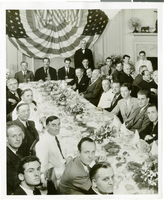
Photograph of a luncheon for the completion of Howard Hughes' Round the World flight, New York City, July 15, 1938
Date
Archival Collection
Description
Image
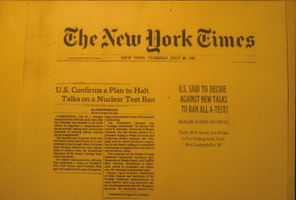
New York Times articles: photographic slide
Date
Archival Collection
Description
From the Sister Klaryta Antoszewska Photograph Collection (PH-00352). From Slides #1550 through 1557. Newspaper title text: "U.S. Confirms a Plan to Halt Talks on a Nuclear Test Ban".
Image
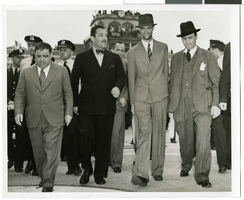
Photograph of Howard Hughes and Grover Whalen at Floyd Bennett Airfield, New York, July 14, 1938
Date
Archival Collection
Description
Image
Dove Ceremony at New York, New York, 8 cuts, 2002 September 11
Level of Description
Archival Collection
Collection Name: New York-New York Hotel and Casino 9-11 Heroes Tribute Collection
Box/Folder: Oversized Box 478
Archival Component
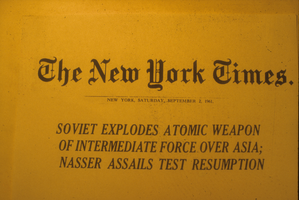
New York Times articles: photographic slide
Date
Archival Collection
Description
From the Sister Klaryta Antoszewska Photograph Collection (PH-00352). From Slides #1550 through 1557. Newspaper title text: “Soviet Explodes Atomic Weapon of Intermediate Force Over Asia; Nasser Assails Test Resumption.”
Image

New York Times articles: photographic slide
Date
Archival Collection
Description
From the Sister Klaryta Antoszewska Photograph Collection (PH-00352). From Slides #1550 through 1557.Newspaper title text: “Powers Pleads Guilty to Spying; Tells Soviet Court, ‘I Am Sorry’; Eisenhower Rebuts Propaganda”.
Image
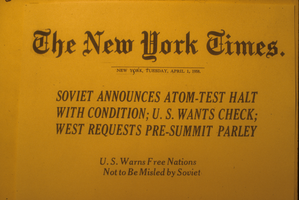
New York Times articles: photographic slide
Date
Archival Collection
Description
From the Sister Klaryta Antoszewska Photograph Collection (PH-00352). From Slides #1550 through 1557. Newspaper title text: “Soviet Announces Atom Test Halt With Condition; U.S. Wants Check; West Requests Pre-Summit Parley”.
Image

Central Park, New York City, New York: panoramic photographs
Date
Archival Collection
Description
Image
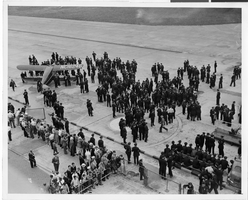
Photograph of a crowd awaiting the arrival of Howard Hughes' plane at Floyd Bennett Airport, New York, July 14, 1938
Date
Archival Collection
Description
Image
